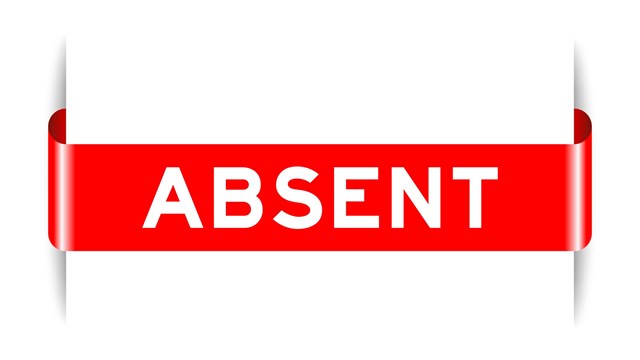
When it comes to the subject of meetings—specifically monthly board meetings or annual unit owner meetings in community associations and HOAs—there seem to be no neutral opinions. A few folks actually like these exchanges, but most dread them.
Some residents and board members report attending poorly-conducted and ineffective meetings that wasted both time and energy, and resolved nothing. Others reported attending meetings where tempers flared, voices were raised, and hard feelings wiped out any possible efficiency or progress. At best, most board members and residents alike seem to regard the board/unit owner meeting as a necessary evil.
Evil or not, board and unit-owner meetings are necessary. Community associations are governed by laws, and should be run as a business. Despite the technical advantages of online meetings, emails, text messages, and smartphones, the multiple layers involved with community association management require regular meetings with formal minutes used to record attendance, votes, and finances. They're like the memory bank of the community—crucially important, even when you can't necessarily see them working.
So, what can boards, unit owners, committees, and association managers do to improve both the quality and productiveness of these regularly scheduled and necessary meetings? Where should board officers look for suggestions and education to improve the quality and outcome of board meetings? Here are a few ideas from some industry pros.
Robert’s Rules of Order and Beyond
Robert's Rules of Order was first published in February 1876 by Brigadier General Henry Martyn Robert, and contained guidelines intended for use by any “deliberative assembly.” The book lists rules loosely modeled after those used at the time in the U.S. House of Representatives. Today, association managers and boards tend to use the protocols to varying degrees, depending on the property.
Robert's Rules tend be particularly useful for larger boards—those with 11 to 13 members, say—where strong leadership is needed to keep everyone on task and moving things forward. “Robert’s Rules are generally incorporated into the bylaws of most associations, but very seldom do people really follow them, unless you’re getting into very controversial issues, where you have strong feelings on both sides. They’re not really designed for board meetings, they’re designed for membership meetings,” says Wendell A. Smith, an attorney and partner at the community association law firm of Greenbaum, Rowe, Smith & Davis, LLP in Woodbridge, New Jersey.
While Robert’s Rules offer many structural and procedural suggestions, boards should take advantage of classes and seminars available all year long from a variety of sources. Publications like The Nevada Cooperator be very helpful, but for more help look to the Community Associations Institute Nevada chapter (CAI-NV), and the Institute of Real Estate Management (IREM), which has a chapter in Las Vegas and Reno.
If a board is self-managed, it may also be useful to have an attorney or association manager present to help run a few meetings, so board members have a real-life example of how a meeting with tight rules can be administered.
Down to the Minutes
Another key component of a well-run meeting is proper minute-taking. Minutes are a meeting’s official business records, and are admissible in court. They should reflect any corporate actions taken, and whether the board acted correctly on any given decision. Given the legal ramifications, it is extremely important to elect a competent board secretary who can plan to attend most (if not all) meetings.
The minutes serve as a reminder for both finished and unfinished business and projects; what follow-up is needed, who is responsible for that follow-up, and what if any actions were finalized. The minutes also serve as a meeting history for new board members, residents, and association management firms. Finally, the minutes offer a road map for the future, and help set the agenda for the next meeting.
That said, taking the minutes during a meeting does not mean boards should slow the proceedings to a crawl in an attempt to get every word uttered down on paper. The minutes should state who motioned for a vote, who seconded that motion, and whether the vote passed or failed. Anyone abstaining from voting should also be included in the records, but any information that may be considered privileged should not be discussed in an open meeting—or reflected in the minutes of the association.
Common Problems, Creative Solutions
Every board is different, but professionals tend to see patterns of behavior over the years, and a few recurring themes when meetings are problematic or generally not productive. Issues of personality can affect boards just like any other business environment, but that's an issue any board can experience, big or small.
Experienced association attorneys and managers like to use the minutes to help prepare the agenda for the next upcoming meeting. If there are projects requiring bids, a good practice is to prepare a spreadsheet with vendor information, and circulate it with enough time for board members to review it. By the time board members are assembled for the meeting, they are well informed and have limited questions. A short review usually results in a decisive vote. This system helps him keep a board meeting running smoothly and on track. An efficient meeting usually falls around an hour, leaving time for twenty to thirty minutes of socialization after the business is finished.
Andy Ashwal, executive director of KW Property Management & Consulting in New York City, says the agenda is key to keeping a meeting on track and constructive. Ashwal thinks an hour is a “healthy” block of time for a board meeting—and anything much over 90 minutes is excessive. The number one problem he sees with board meetings is not sticking to the agenda. The reasons vary, but a tendency to socialize at the beginning of the meeting—rather than at the end—is a common occurrence. “Board members are volunteers, with their neighbors, for their neighbors, and spending time catching up is often the cause for a delayed start,” he says.
Ashwal sends a detailed agenda package out to the board prior to the meeting. “We attach related documents so they can catch up on the topics and let us know if they would like anything else included. The meetings run more efficiently when the board lets the association manager know if they want to discuss a new topic or one not included. We put a time frame on the agenda and set aside 5 to 10 minutes for new business.” If the meeting gets off track, Ashwal refers back to the time frame, but acknowledges, “It doesn’t always work.”
Alan Pearlstein, general manager for community management firm FirstService Residential, echoes Ashwal that personal discussions and socialization need to be redirected to the end of the meeting. “There is always at least one member who treats the board meeting as a social, and this is compounded if the meeting is in a board member’s home,” says Pearlstein.
Like the other professionals, Pearlstein notes that not keeping to the agenda and spending too much time on the minutes are common distractions, and adds that an overloaded agenda can also bog down a meeting. “If there are too many items on the agenda, schedule another meeting” he says.
Pearlstein says he sometimes breaks meetings into segments with a board-only meeting preceding an open meeting for the residents. He also recommends sending out a board packet at least a week in advance of a meeting to include the agenda, minutes, financials, management reports and any proposals. “Each proposal should have a spreadsheet-analysis summary for comparison with at least two other proposals so the board can make quick educated decisions.”
When meetings get off track, Pearlstein’s standard approach is a “hard stop time.” He introduces that time at the beginning of the meeting and refers back to it, “I have a hard stop at 8 p.m. so let’s get back to 'x' , and you can discuss this off-line later.” Another approach he uses for hot topics is to table the discussion until later in the meeting or for a future meeting. “It is important to get to the issues that must be addressed at the meeting, other confrontational items can possibly be discussed off-line or at a future meeting.”
At monthly meetings in which unit owners are invited to attend, it's important to keep statements to an allotted time, so the length of the meeting doesn't get out of hand. Typically, each homeowner should be given around three minutes to voice whatever concerns they may have. But, sometimes it doesn't happen. It can be difficult to shorten peoples' statements for fear of coming off as rude, but if everyone is left to wax poetic for as long as they want, it will feel like the meeting will never end. “Boards need to try and segregate the official business of the meeting from the unit owner portion of the meeting, because if they allow the unit owners to participate in official business, it goes on and on,” says Smith. “They should get the official business out of the way, and open it up to unit owners to discuss what’s on their minds. It’s not always an individual complaint, though sometimes it is. Individual complaints should be referred to management, it’s not something that should be addressed at a meeting.”
Different Strokes
There are some basic differences between board meetings and meetings open to unit owners. “Board and committee meetings are free-flowing discussions. We want the board members to interact and discuss the topics on the agenda,” says Ashwal. “Meetings are primarily held to update the residents, and give the residents an opportunity to ask questions.”
Pearlstein explains the basic format is the same, but special care is needed to be sure the bylaw rules are followed for annual elections, and proof of mailing for the meeting. “It is important to make sure unit owners are kept in the loop so they feel they are a part of running the building,” he says.
The experts recommend a strict format for unit-owner meetings from roll call through minutes, reports, ballots and the election of a new board, also making sure there is time for discussion and questions.
If your meetings are not effectively moving along the business of your building, these experts have formulas worth implementing. Their suggestions and proven techniques are sure to take the “bored,” and the dread out of monthly board meetings.






Leave a Comment